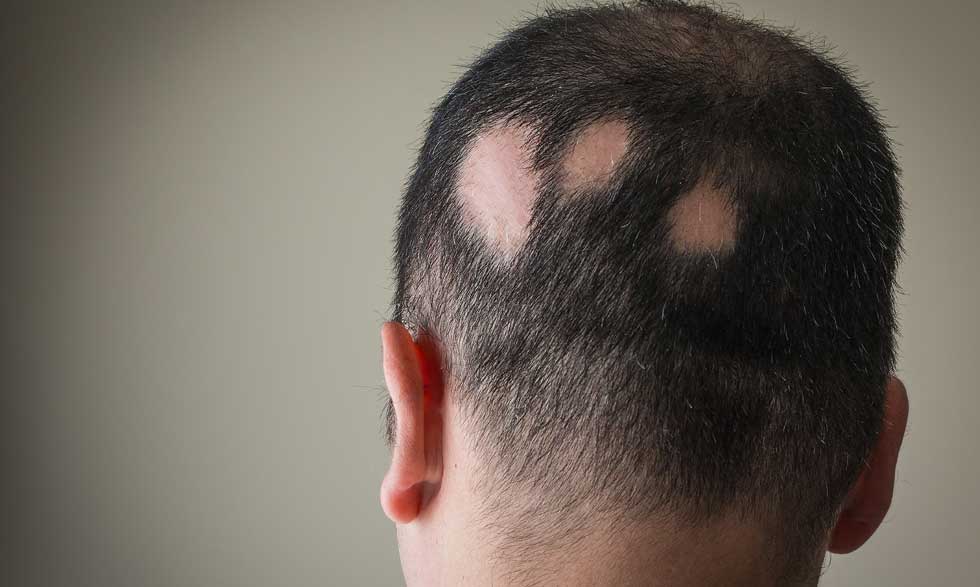ALOPECIA

What is alopecia?
Alopecia is diffuse (global) hair loss. The hair loss can be global, involving all hair bearing surfaces, patchy or in a pattern. There are many different kinds of alopecia and they differ based on their pattern and extent of hair loss.
Are there different kinds of alopecia?
Yes, there are many kinds of alopecia. Alopecia is further classified into scarring and non-scarring alopecia.
- Pattern hair loss: Most common type of progressive balding with recession occurring along both temples, high forehead or crown of the head.
- Alopecia areata: Local loss of hair in round or oval areas with no scarring or inflammation of the skin.
- Alopecia universalis: Loss of all hair on the scalp, eyebrows, beard and all body hair.
- Alopecia totalis: Loss of all hair on scalp, with retention of some body hair.
- Telogen effluvium: Transient shedding of normal “telogen” hairs resulting in daily hair loss and if severe, thinning of hair.
What causes alopecia?
The cause of alopecia varies depending on the type of alopecia the patient has. The hair follicle cycle has 3 phases: anagen (growth phase), telogen (quiet phase, no growth and no death), and catagen (dying phase). A defect in the hair cycle can lead to a variety of hair loss or hair growth patterns, depending on what phase is affected. Diffuse hair loss without scarring is caused by failure of hair follicle production, hair shaft abnormalities or abnormal cycling (shedding). Focal and patchy hair loss can be caused by infection, abnormalities of the hair cycle, hormones (androgenetic alopecia) or hair breakage. Stress, immune-system, drugs can all trigger a defective hair cycle.
How is alopecia treated?
The treatment of alopecia varies based on the type:
- Pattern hair loss: Oral finasteride. This blocks the conversion of testosterone to a more potent hormone, DHT, that causes male-pattern hair loss. Topical minoxidil can help reduce rate of hair loss and restore some growth. Other management therapies include hairpieces and hair transplantation.
- Alopecia areata: Injection of steroids (triamcinolone) into affected area to help decrease immune response and hair loss.
- Alopecia universalis and totalis: Similar to alopecia areata, oral steroids can be used and induce re-growth but hair loss recurs when drug is discontinued.
- Telogen effluvium: No treatment necessary, just reassurance that this is part of the normal hair cycle.
References:
Wolff K, Johnson, RA. Fitzpatrick’s Color Atlas and Synopsis of Clinical Dermatology. Sixth Edition. 2009.


